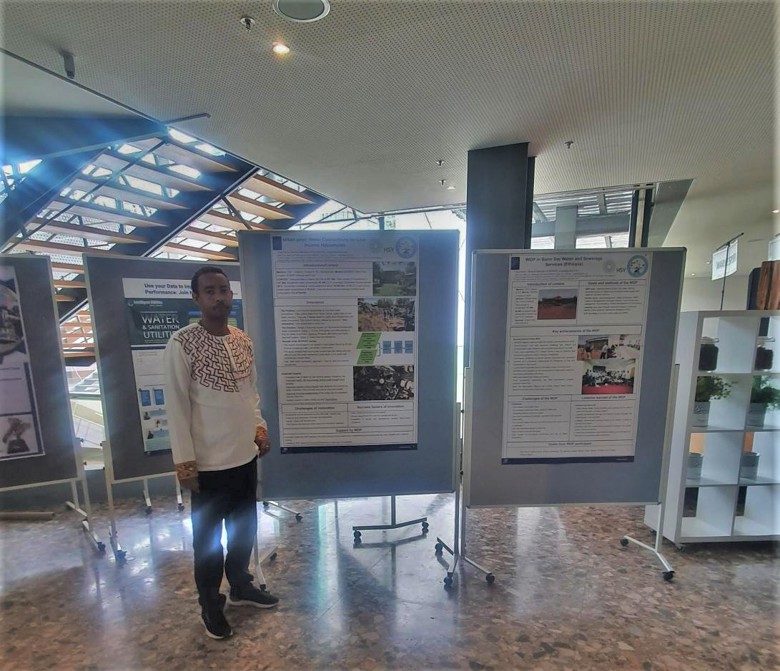The Director of Bahir Dar Water Utility visited HSY

The director of the Bahir Dar Water Utility (BDWSS) in Ethiopia, Mr. Yirga Alemu, visited HSY from May 15th to 19th.
The goal of this particular visit was to provide training to Mr. Yirga Alemu in utility management according to the project plan, by giving him examples, especially regarding HSY's water utility management and the necessary support activities, programs, stakeholders, and processes. Throughout the week, many representatives from HSY were involved in presenting our operations to the director of the Bahir Dar Water Utility. The visit was related to the EU Water Operators' Partnership (WOP) project that started last year, in which HSY supports the Bahir Dar Water Utility located in northern Ethiopia. The EU-funded WOP program aims to strengthen the provision of sustainable water services through mutual learning and knowledge sharing between different water utilities.
The objective of the project is to improve the management of the Bahir Dar Water Utility and the water supply network. HSY will help BDWSS to develop, among other things, the management of water meters, the management of the network, non-revenue water (NRW) reduction as well as the overall management of the utility. In addition, the project aims to improve access to piped water for low-income families.
The project is managed by the Global Water Operators Partnership Alliance (GWOPA), a network under the UN-Habitat, to which HSY joined in March 2023.
During the visits, valuable information has been gathered for the implementation of the project by learning about the operations of water utilities from both sides.
Differences and similarities between the water utilities
Jyrki Kaija, a specialist in the EU WOP project, interviewed Mr. Yirga Alemu during the visit to discuss the differences and similarities between our water utilities.
According to the director of the Bahir Dar Water Utility, the main difference between the two utilities is that in addition to producing drinking water and treating wastewater, HSY also provides waste management services, whereas the operations of the Bahir Dar Water Utility focus solely on producing drinking water and developing wastewater treatment. The significant differences lie in wastewater treatment, where HSY is at the forefront, while Bahir Dar is still in the process of building the required infrastructure for wastewater treatment.
Despite the differences in functions and operational conditions between HSY and Bahir Dar, there are also many similarities. The fundamental elements of water utility operations, such as water distribution and leakage management, are the same.
In Bahir Dar, in addition to the EU WOP project and the improvement of wastewater treatment, there are other important projects underway to ensure drinking water distribution. Currently, only half of the city residents have access to clean drinking water, but after the ongoing internationally funded projects, this will increase to 80 percent.
The next concrete actions under HSY's responsibility in the project are the construction of a district metering point in Bahir Dar and support for the procurement of leak detection devices and training on their use. Knowledge exchange and the improvement of access for disadvantaged individuals are progressing as planned.
The entire interview can be viewed below.
Our collaboration highlighted at an international conference
Last week, GWOPA brought together water utility professionals from around the world for the international WOP conference held in Bonn, Germany from May 22nd to 25th.
During the conference, Mr. Yirga Alemu also had a poster presentation showcasing the collaboration between HSY and BWDSS.
The conference focused on various themes, including resilience, implementing sustainable development goals, expanding GWOPA into national programs, barriers to women's participation in the workforce, and gender equality in the workplace.
There is an ongoing discussion within GWOPA to explore possibilities for expanding GWOPA-like activities at the national level. In this model, the water utilities currently involved in the program take on mentorship roles and locally transfer good practices and knowledge to colleague utilities in Ethiopia.